Sheep farming is the act of raising and breeding sheep for their milk, meat, wool, sheepskin, and parchment. Sheep farming is also called sheep husbandry, a sub-division of animal husbandry. Sheep farming plays a significant role in the livelihood of the farmers. To perform sheep farming, the farmers can choose from the numerous breeds available in the market.
However, the farmer should keep in mind that those breeds should be selected to quickly adapt to the climatic, region, and market conditions. Let’s check out more information on how to start Goat and Sheep farming in United Arab Emirates
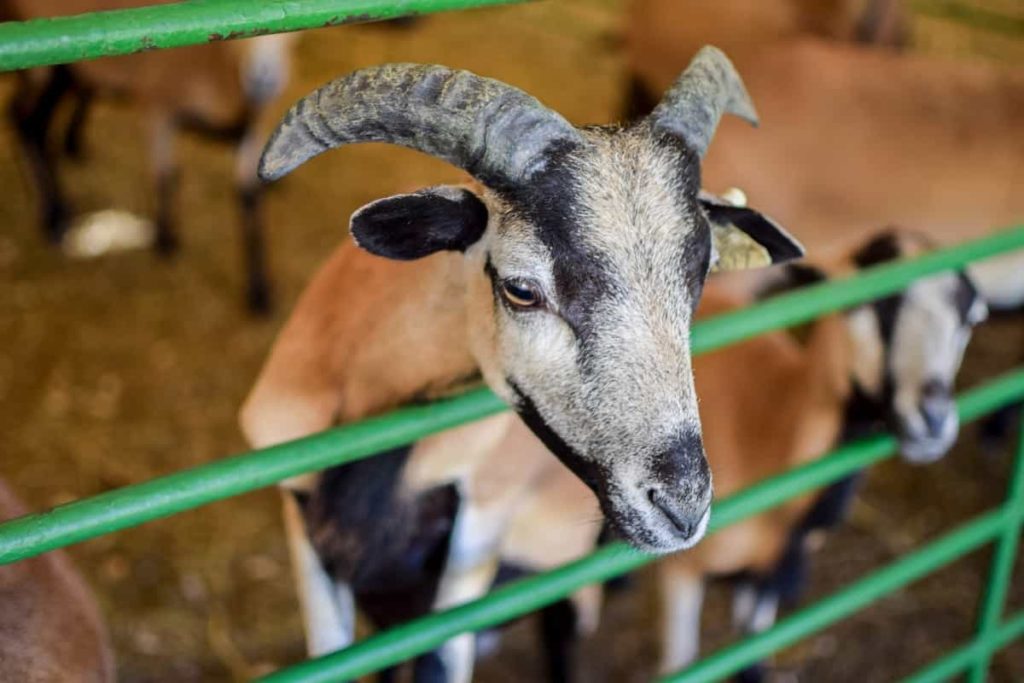
Advantages of sheep farming
- Sheep wool is hot and has numerous other benefits: Sheep wool is used not only for making clothes and bedding but also to help insulate the house. Sheep wool is flame resistant and helps absorb toxins from home. Additionally, it is non-carcinogenic, can block noise, and the thread is recyclable and sustainable. However, the farmer should always ensure that the wool is clean and microorganisms-free.
- Sheep meat: Raising sheep to sell it to slaughterhouses or retail markets is a common practice. Sheep meat is not only full of nutrients but is also tasty. The farmers can sell the sheep meat to earn money.
- Nutritious milk: Sheep milk is very healthy, has double calcium compared to cow milk, and has high levels of vitamin C, B, B-12, riboflavin, and thiamine. Sheep milk helps improve the immune and nervous systems of the body. Sheep milk produces more cheese than cow milk because it has more solids. Some of the different types of sheep cheese available in the market are feta, ricotta, and Roquefort. If the farmer’s primary purpose is to sell and use sheep milk, they should buy the milk-producing sheep breeds because they produce more milk than the non-dairy breed.
- Sheep breeding can be lucrative: Sheep and sheep products are a growing market. People have started demanding sheep meat and sheep dairy products, considering they have more nutrition than cow’s milk. For selling live sheep or sheep products, the sheep farmer should always keep the sheep healthy and free from diseases because some countries have import standards for sheep and sheep products.
- Sheep can be used as lawn movers: Sheep can be used to remove all the unwanted grass and bushes. They are natural lawn movers used at many places, such as golf courses, to clean the unwanted grass. Their ability to graze also helps the farmers save money because many people hire sheep to clean extensive lawns without using electronic lawn movers.
- Sheep are very friendly pets: Sheep are very friendly and low-maintenance pet animals. Also, the sheep owner can get free organic milk and homemade cheese. Some research proves that small sheep can also teach children to be responsible.
In case you missed it: 19 Key Rules for Effective Goat Farm Management: From Planning to Reducing Production Cost
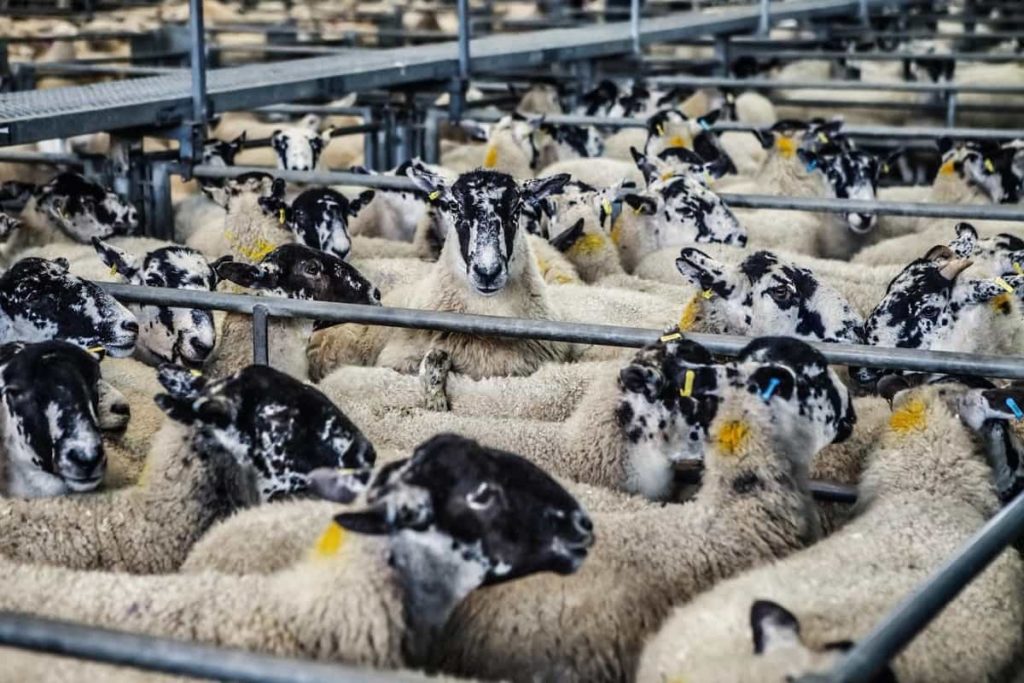
Meaning of goat farming
Goat farming is the act of raising and breeding goats for their milk, meat, fiber, and skin. Goat farming is also called goat husbandry, a sub-division of animal husbandry. Goats farming plays a significant role in the livelihood of the farmers. Goat Farming is a very low investment animal farming activity. With just five goats, a farmer can earn his livelihood. The farmer can choose from numerous breeds of goats present in the market; however, only those goats should be selected to quickly adapt to the environment and atmosphere in which the farmer lives.
Though there are many goat breeds, in totality, the goat breed can be classified into five categories: meat goat breed, dairy goat breed, pet goat breed, breeding goat breed, and skin goat breed. Goat farming is advantageous for the farmer because he can earn quick returns on investment and requires much less space.
Advantages of goat farming
- Goats require very little space: Compared to cows, camels, horses, etc., goats require a minimal amount of space to live. The farmer does not have to spend much money to make a place for goats to stay. The requirements for goat housing are significantly less; at times, they can also live with other domestic animals.
- Goats require less food: Since goats are small animals, they require less feed than big domestic animals.
- Goats can be raised for various purposes: There are numerous purposes for which goats can be raised. The goats can be used for meat and milk. With the increasing population and reduction in agricultural land, the demand for goat meat and milk is increasing. Also, there are no religious constraints regarding goat meat; hence the market for goat meat and goat milk is extensive.
- Numerous varieties of goats: There are multiple breeds of goats available in the market; however, goats should be purchased considering the purpose for which the goat will be used. Additionally, before buying the goats, the farmer should remember that only those goat breeds purchased can quickly adapt to the climate and weather of the region.
- Goats grow faster as compared to other animals, because of which they provide a quick return to the farmer.
- Goat farming is an excellent means of livelihood because the goats grow early, have a ready market, and goat products are in demand because of no constraints.
In case you missed it: How to Start Sheep Farming From Scratch: A Detailed Guide for Beginners
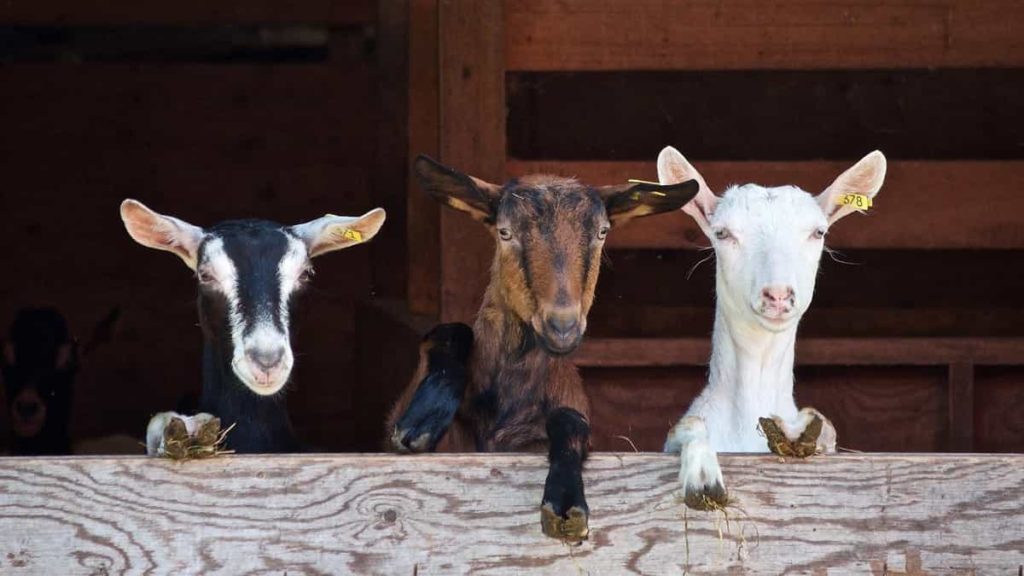
Large-scale farming of goats and sheep/ challenges faced by farmers in UAE in sheep and goat farming
Sheep and Goat farming is carried out on a large scale in the country because there are numerous challenges in the farming sector, such as extreme climate and the non-availability of natural grazing fields. Carrying out farming by small and marginal farmers is not feasible because a considerable of resources are required to meet the challenges. Some of the significant challenges faced by goat and sheep farmers are:
- Intense heat and humidity: The region’s harsh climate is a significant constraint. In the summer months, the temperature crosses 50 degrees. The goats and sheep need protection from such extreme temperatures, although the farmers usually only use such goats and sheep that can sustain in such extreme temperatures.
- Non-availability of natural fodder: The country’s geographical location is such that there are no or few grazing fields. In such situations, the farmers have to depend on factory-manufactured animal feed.
The approximate number of sheep and goats found in the UAE till 2020
The total number of sheep and goats in the United Arab Emirates was around 5 million by 2020, with approximately 20,54,572 sheep and about 23,99,264 goats
- Sheep: The top three emirates that account for approximately 91% of the total number of sheep are Abu Dhabi, Ras-Al Khaimah, and Sharjah. The maximum number of sheep found in Abu Dhabi is about 16,68,134
- Goats: The top three emirates, which account for approximately 78% of the total number of goats, are Abu Dhabi, Ras-Al Khaimah, and Fujairah. The maximum number of sheep found in Abu Dhabi is around 13,45,128
Current market scenario of sheep and goats in the UAE
The country mainly depends on imports of live goats and sheep to meet the increasing demand by the country’s people. However, the country cannot import live goats and ships from all the nations. A list of approved countries for importing sheep and goats is issued by the United Arab Emirates Ministry of Climate Change and Environment. For instance: Argentina, Australia, Armenia, etc., are the countries from where imports of sheep and goats can be done.
On the other hand, there is also a list of countries where sheep and goats cannot be imported, such as Austria, Bolivia, etc. The UAE imports live sheep and goats from India, Somalia, Australia, Oman, etc. India is the highest exporter of goats and sheep to the UAE, occupying approximately 33% of total imports.
To go further down, out of total imports of live sheep and goats, sheep occupy 58%, and goat occupies 41%. The country also exports live sheep and goats, and the primary nation to which the country exports is Oman, which occupies approximately 54% of the total export of live sheep & goats.
How to start Goat and Sheep farming in United Arab Emirates (UAE): Steps
Location of the firm
The first step to opening a sheep & goat farm in UAE is to finalize the firm’s site because some of the rules and regulations change as the location changes. The person thinking of opening a sheep and goat farm should first decide the emirate in which the farm should be located. There are seven emirates in the UAE; however, Abu Dhabi is known for sheep and goat farms and all other agricultural activities. Therefore, the best preferable location to open the firm in Abu Dhabi.
After deciding about the emirate in which the entrepreneur tends to open the farm, the next step will be to decide about the economic zone. There are two economic zones – the Free Zone and the Mainland. The rules & regulations and cost of establishment change with the location. It is better to open a new farm near the place where goat and sheep farming already exists because the logistics and other resources will be readily available
In case you missed it: How to Start Goat Farming from Scratch: A Complete Guide for Beginners
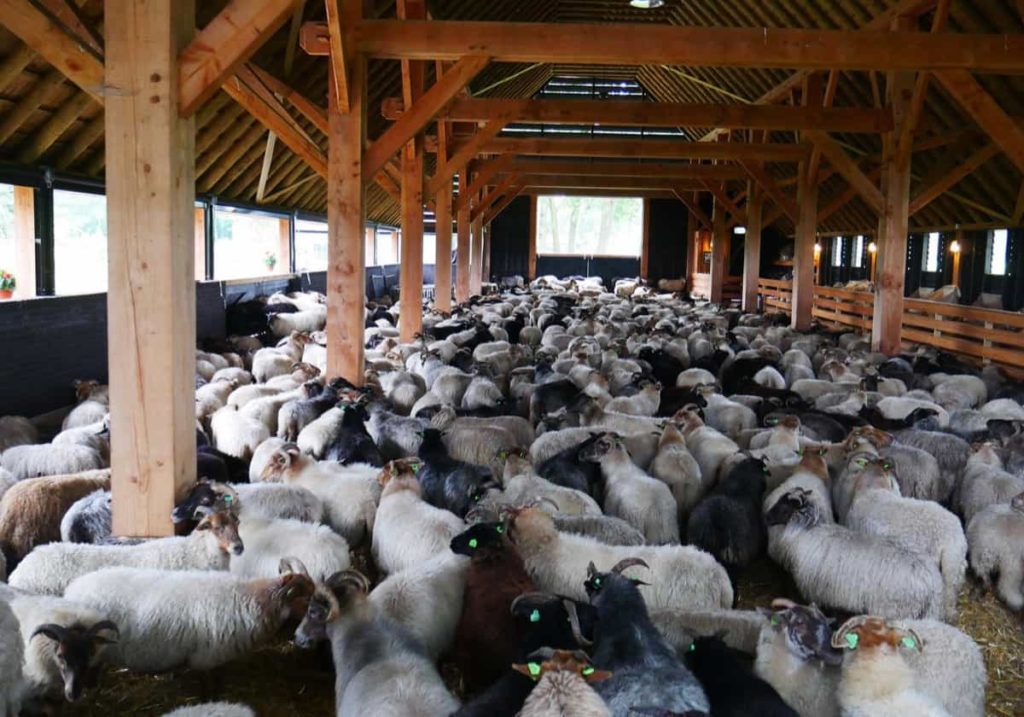
Decide whether to rent or buy the farm
The second step to opening the farm will decide whether the entrepreneur wants to take the farm on rent or purchase the land. If the entrepreneur chooses to rent the ground, the farm business owner must submit the tenancy contract to the Department of Economic Development (DED). If the farm is to be opened in Dubai, EJARI also is presented. EJARI (a government program to regulate all tenancy contracts) is evidence of a tenancy contract.
Legal requirements
The sheep and goat farm owner should obtain legal clearance from the government of the UAE and other relevant authorities. For livestock farming, getting a livestock production farming license is essential. The permit is issued by the United Arab Ministry of Climate Change and Environment (MoCCA). Some of the documents which should be submitted to the government to obtain a livestock production permit:
- Trade name of the firm obtained from local authority
- Copy of environmental license from the relevant authority
- The farm plan (image of the site and the installations)
- The relevant authority should approve the farm location/farm plan.
- A detailed breakdown of various buildings, including an administrative building, feed storage, animal isolation, etc
- Lease/ownership contract copy of the establishment of veterinary
- Valid trade license copy
- The data (ID number, name, number of licenses, etc.) of the technical person who will work in the facility has to be registered.
- Document stating what methods and techniques will be used for animal breeding
- The operating plan of the establishment (health care plans, nutrition plans, contingency plans, etc.)
Arranging a visa
Any entrepreneur who wishes to open a goat and sheep farm should have a residency permit or be a citizen of the country. Entrepreneurs from foreign countries are interested in farming activities because of the various initiatives taken by the government to improve food security. Additionally, the government has also provided 100% ownership to foreign investors.
Considering all of this, many foreign entrepreneurs are interested in livestock farming activities. For carrying out such activities, a residency visa for foreigners is a must. The process to obtain a residency visa is:
- Entry Permit Application
- Adjustment of status
- Medical Test Report
- Emirates ID Registration
- Visa stamping
Buying goats and sheep
Before opening a sheep and goat farm, the farmer or entrepreneur should arrange for the livestock. Majorly sheep and goats used are those which can quickly adapt to the harsh climatic conditions of the desert. Check out the goats and sheep breeds that are available and used for farming in the UAE below.
Key breeds of goats and sheep found in the United Arab Emirates
- Omani Jebel Akhdar Goat: The Omani goats are native to the interior regions of Oman and the Jebel Akhdar mountains. They have the largest body size and long hair, which is golden to brown in color, long pendulous ears, and horns twisted backward.
- Kashmiri Goat: Kashmiri goats are native to the Kashmir state in the Himalayas. This breed of goat is mainly known for its excellent and soft quality of wool, and they are commercially grown to sell the wool it produces. The Kashmiri wool is very famous all across the globe, and it provides high returns to the goat farmer.
- Somali Goat: This goat breed is native to the northeastern region of Kenya, Somalia, and Djibouti. These goats can easily survive in arid areas; thus, they are used for farming in the country. This breed of goat is mainly used for meat in the country. This breed is highly resistant to diseases, requires low maintenance, and can survive even in drought conditions.
- Jaziri Goat: Jaziri goat is mainly raised for meat. They are native to Egypt and mostly imported from Egypt. Jaziri goats were initially banned from imports, but the ban was lifted in 2020.
- Indian Goats
- Local Goats
In case you missed it: Common Mistakes in Sheep Farming: For the First Time Sheep Owners
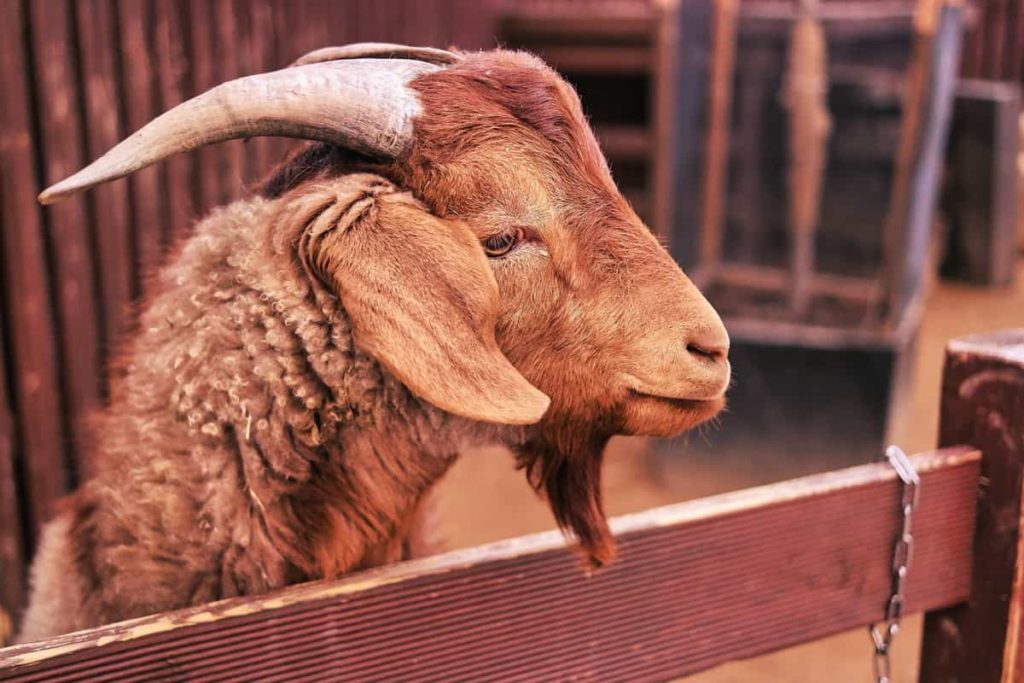
Most common breeds of sheep that are used for farming activities are:
- Najdi Sheep: Najdi sheep originated in the Najd region of the Arabian Peninsula. It is mainly grown for milk and wool.
- Nuaimi Sheep: Nuaimi sheep are native to southwest Asia and originated in the Syro-Arabian desert.
- Kashmiri Sheep: The Kashmiri sheep are hornless and mainly raised to obtain wool.
- Somali Sheep: The Somali sheep, also known as the Somali blackhead, is native to Somalia and has a fat tail. The sheep are mainly reared for meat.
- Jaziri Sheep: Jaziri sheep are primarily raised for meat. They are native to Egypt and mostly imported from Egypt. Jaziri sheep were initially banned from imports, but the ban was lifted in 2020.
Arranging feed for goats and sheep
The UAE has minimal arable land and no natural grazing fields, because of which the sheep and goats rely on feed purchased from the market. One of the leading and largest feed production companies in the UAE is National Feed and Flour Production and Management (NFFPM). It is essential that the feed companies should be HACCP and ISO certified.
Sheep and goats need protein, minerals, fiber, vitamins, water, etc., to grow, reproduce and produce milk. The amount of feed that goats and sheep need depends on factors such as the weight of the animal (the bigger and fatter the animal, the more feed it requires), the quantity of milk needed, the age of the animal, and the level of activity of the animal, etc.
- Water: Water is essential for the sheep and goats. The average water required by sheep and goats daily is around 5 liters or about 10% of the body weight. The amount of water needed by sheep and goats also depends on the weather conditions, the feed’s water content, and whether the animal is pregnant.
- Energy: Goats and sheep need the energy to move around, produce milk, and grow. The food fed to the sheep and goats for energy is starch, sugars, cereals, fibers, mature grasses, molasses, etc.
- Proteins: Proteins are necessary for both goats and sheep because it impacts the quality of milk and meat. Essential sources of protein that are given to the animal as feed are alfalfa, disodium, cereals, molasses, cassava meal, etc.
- Minerals: Minerals such as salt, calcium, and salt are necessary for sheep and goats because a shortage in mineral quantity will reduce the appetite of the animal, cause a decline in its fertility, and cause poor quality of fur (in the case of sheep), poor development, etc.
In summary, feed should consist of legumes (such as alfalfa, white and red clover, birdsfoot trefoil, etc.), Sod-forming grasses (such as Kentucky bluegrass, red canary grass, etc.), bunch grasses (such as Italian ryegrass, tall fescue, etc.).
Arranging Shelter for the goats and sheep
Some of the shelter requirements mentioned explicitly by the government:
Considering the country’s harsh climate, where there is extreme heat, humidity, and winds, relevant shelter should be created for sheep and goats. In addition, the sheep and goat farmers should ensure proper mechanical and natural ventilation to avoid high humidity, condensation, damaging ammonia levels, etc. To protect the sheep and goats from harsh sunlight, the entrepreneurs should use thick curtains to block the sun’s rays and protect the animals from sunlight.
Additionally, it should also be ensured that the roofs are insulated, and there is no leakage from the ceiling. Finally, the shelter must be regularly cleaned & sanitized, and there should be well drainage for the rest of the animals. The fences and hedges used to create boundaries should be made of barbed wire. The barriers and borders should be well-maintained and should be regularly checked to ensure that goats and sheep are not harmed.
Arranging equipment necessary for sheep and goat farming
All the types of equipment that are necessary for sheep and goat farming should be arranged by the entrepreneur. Equipment such as sorting pens, lambing pens, tools for tail docking, castrating, ear tagging, shearing, etc. should be arranged by the entrepreneur
Disease management
Foot and mouth disease
- Symptoms: Some of the symptoms of foot and mouth disease are fever, foot lesions along the coronary band, unrecognized interdigital space, decreased milk production, inflammation of the mucous of the mouth, no rumination, etc.
- Treatment: Isolate the animal, do not relocate the animal, and inform the veterinarian. The veterinarian should immediately notify the concerned authorities of animal health. The disease needs to be reported to the concerned authorities according to the UAE Federal Law No.8 on preventing and controlling contagious and epidemic animal diseases.
- Precaution: Some methods that can be adopted to prevent foot and mouth disease are: Avoid the admission of new sheep and goats without proper health checkups, regular cleaning and sanitization of tools, animal equipment, and vehicles, and reporting new cases immediately. Also, routine vaccination should be ensured.
In case you missed it: How this Farmer Made 5 Lakh Profit From His Goat Farm – A Success Story
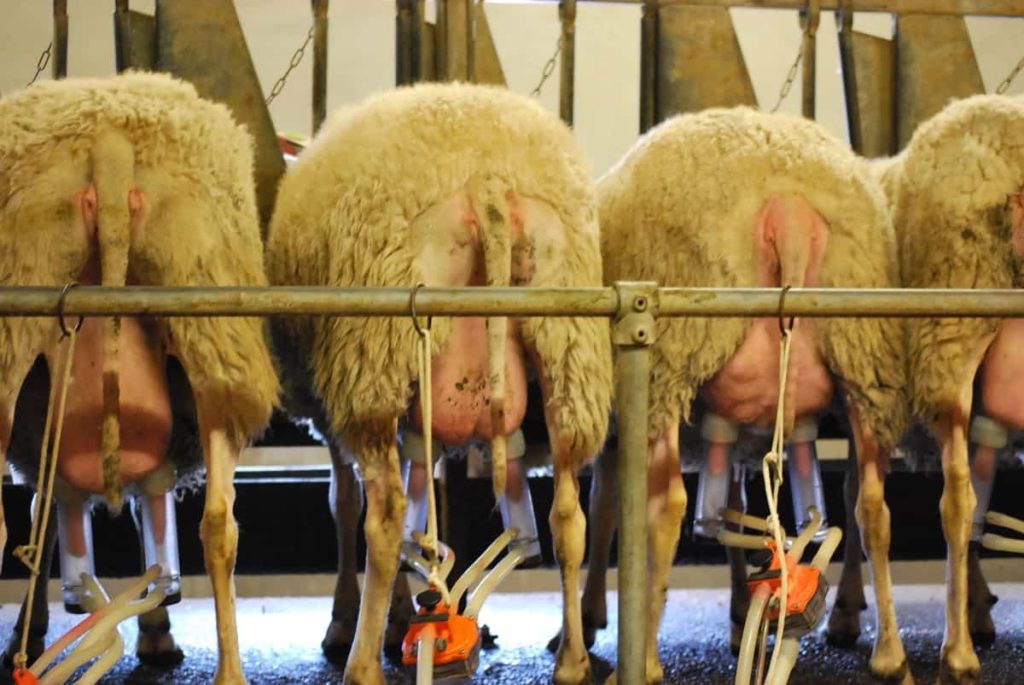
Sheep and Goat Pox
- Symptoms: Some of the symptoms of sheep and goat pox are fever, skin rash, and blisters, especially around the eyes, mouth & nose, etc.
- Treatment: Isolate the animal, do not relocate the animal, and inform the veterinarian. The veterinarian should immediately notify the concerned authorities of animal health. The disease needs to be reported to the concerned authorities according to the UAE Federal Law No.8 on preventing and controlling contagious and epidemic animal diseases.
- Precaution: Some methods that can be adopted to prevent sheep and goat pox are: Avoid the admission of new sheep and goats without proper health checkups, regular cleaning and sanitization of tools, animal equipment, and vehicles, and reporting new cases immediately. Also, routine vaccination should be ensured.
Peste des petits ruminants (PPR)
- Symptoms: Some of the symptoms of PPR disease are sudden rise in temperature, sneezing & snoring, loss in appetite, inflammation of the lower lip, gum, & gum line, diarrhea, sluggishness, etc
- Treatment: Isolate the animal, do not relocate the animal, and inform the veterinarian. The veterinarian should immediately notify the concerned authorities of animal health. The disease needs to be reported to the concerned authorities according to the UAE Federal Law No.8 on preventing and controlling contagious and epidemic animal diseases.
- Precaution: Some methods that can be adopted to prevent PPR are: Avoid the admission of new sheep and goats without proper health checkups, regular cleaning and sanitization of tools, animal equipment, and vehicles, and reporting new cases immediately. Also, routine vaccination should be ensured
Brucellosis
- Symptoms: Some of the symptoms of brucellosis are inflammation in the embryonic membrane, poor fertility, etc.
- Treatment: Isolate the animal, do not relocate the animal and inform the veterinarian. The veterinarian should immediately notify the concerned authorities of animal health. The disease needs to be reported to the concerned authorities according to the UAE Federal Law No.8 on preventing and controlling contagious and epidemic animal diseases.
- Precaution: Some of the methods that can be adopted to prevent PPR disease are: Avoid the admission of new sheep and goats without proper health checkups, periodic laboratory tests to detect the disease, regular cleaning, and sanitization of tools, animal equipment, vehicles, and reporting new cases immediately. Also, routine vaccination should be ensured
Opening bank accounts and arranging funds
The entrepreneur who enters into any monetary transaction (such as obtaining a loan) in the country must have a UAE bank account. Before opening a bank account, it is essential to research the benefits provided by different banks and then make an informed decision about which bank to select for opening a bank account. The average rate of interest charged by banks is around 10%. The amount of funds required to open a sheep & goats farm in UAE depends on the location, type of breed purchased, and the number of visas needed.
Conclusion
To summarize, the United Arab Emirates majorly depends on the imports of live sheep and goats. In the coming years, the number of sheep and goat farms will increase because of the numerous policies made by the government to improve food security in the country. The steps required to open a sheep and goat farm in UAE have been mentioned above.
- Types of Pesticides Used in Agriculture: A Beginner’s Guide
- Economical Aquaculture: A Guide to Low-Budget Fish Farming
- 15 Common Planting Errors That Can Doom Your Fruit Trees
- How to Make Houseplants Bushy: Effective Tips and Ideas
- Innovative Strategies for Boosting Coconut Pollination and Yield
- Pollination Strategies for Maximum Pumpkin Yield
- The Complete Guide to Chicken Fattening: Strategies for Maximum Growth
- Natural Solutions for Tulip Problems: 100% Effective Remedies for Leaf and Bulb-Related Issues
- Revolutionizing Citrus Preservation: Towards a Healthier, Greener Future
- Natural Solutions for Peony Leaf and Flower Problems: 100% Effective Remedies
- Maximizing Profits with Avocado Contract Farming in India: A Comprehensive Guide
- Natural Solutions for Hydrangea Problems: 100% Effective Remedies for Leaf and Flowers
- The Ultimate Guide to Choosing the Perfect Foliage Friend: Bringing Life Indoors
- From Sunlight to Sustainability: 15 Ways to Use Solar Technology in Agriculture
- The Ultimate Guide to Dong Tao Chicken: Exploring from History to Raising
- The Eco-Friendly Makeover: How to Convert Your Unused Swimming Pool into a Fish Pond
- Mastering the Art of Delaware Chicken Farming: Essentials for Healthy Backyard Flocks
- 20 Best Homemade Fertilizers for Money Plant: DIY Recipes and Application Methods
- How to Craft a Comprehensive Free-Range Chicken Farming Business Plan
- Brighten Your Flock: Raising Easter Egger Chickens for Beauty and Bounty
- How to Optimize Your Poultry Egg Farm Business Plan with These Strategies
- Subsidy for Spirulina Cultivation: How Indian Government Schemes Encouraging Spirulina Farmers
- Ultimate Guide to Raising Dominique Chickens: Breeding, Feeding, Egg-Production, and Care
- Mastering the Art of Raising Jersey Giant Chickens: Care, Feeding, and More
- Ultimate Guide to Raising Legbar Chickens: Breeding, Farming Practices, Diet, Egg-Production
- How to Raise Welsummer Chickens: A Comprehensive Guide for Beginners
- How to Protect Indoor Plants in Winter: A Comprehensive Guide
- Ultimate Guide to Grow Bag Gardening: Tips, Tricks, and Planting Ideas for Urban Gardeners
- Guide to Lotus Cultivation: How to Propagate, Plant, Grow, Care, Cost, and Profit
- Agriculture Drone Subsidy Scheme: Government Kisan Subsidy, License, and How to Apply Online
- Ultimate Guide to Raising Araucana Chickens: Breed Profile, Farming Economics, Diet, and Care
- Bringing Hydroponics to Classroom: Importance, Benefits of Learning for School Students
- Ultimate Guide to Raising Polish Chickens: Breed Profile, Farming Economics, Diet, and Care
- Ultimate Guide to Raising Australorp Chickens: Profile, Farming Economics, Egg Production, Diet, and Care
- Silkie Chicken Farming: Raising Practices, Varieties, Egg Production, Diet, and Care
- Sussex Chicken Farming: Raising Practices, Varieties, Egg Production, Diet and Care
How to get a market of sheep and goat in UAE?